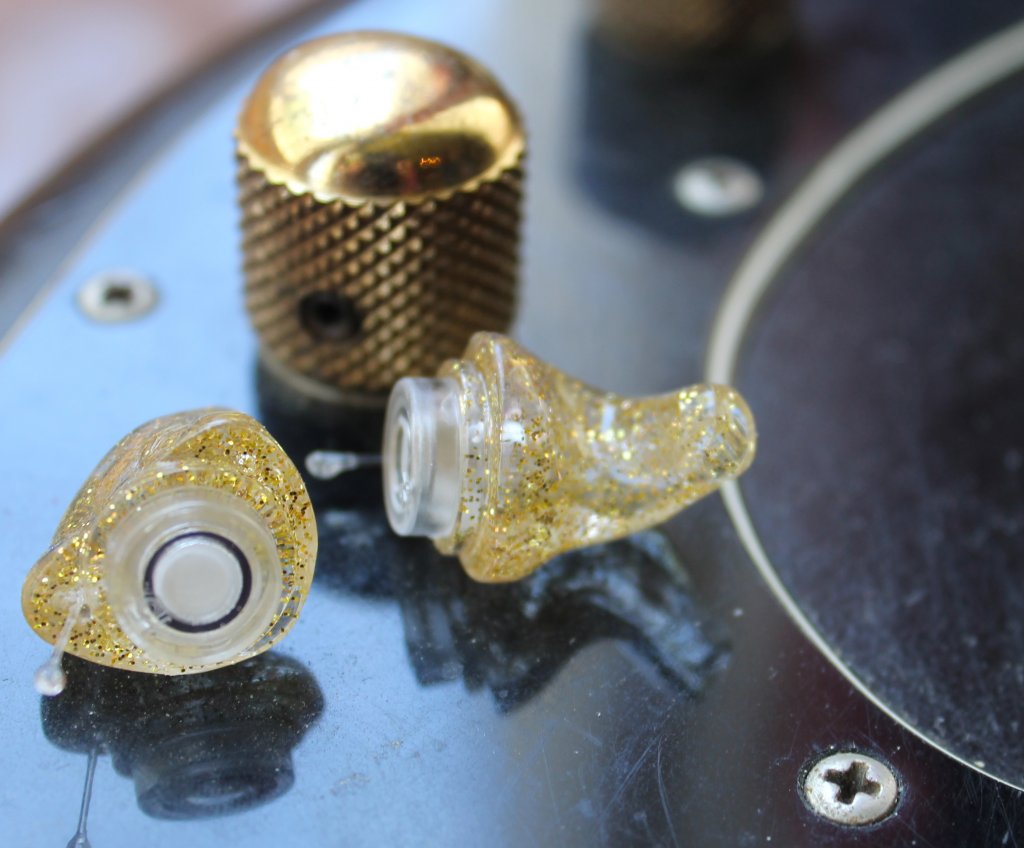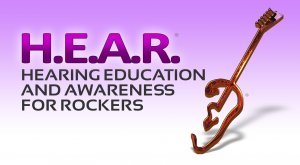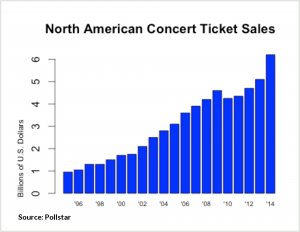“PLUGS IN THE CLUBS” INITIATIVE

Photo of Musicians Custom Earplugs © 2015 H.E.A.R.
About H.E.A.R.
 Prevention and education were an ongoing effort at the United States Environmental Protection Agency until its Office of Noise Abatement was eliminated in 1982.1
Prevention and education were an ongoing effort at the United States Environmental Protection Agency until its Office of Noise Abatement was eliminated in 1982.1
H.E.A.R. (Hearing Education and Awareness for Rockers), a 501(c)(3) nonprofit organization established 1988 in San Francisco, California, was the first of its kind to launch world-wide music hearing conservation campaigns with the support of founding donor Pete Townshend of the Who, The Bill Graham Supporting Foundation, The Les Paul Foundation, The Hearing Aid Music Foundation and others. H.E.A.R. is dedicated to the prevention of hearing loss and tinnitus among musicians, DJs, sound engineers, educators and students, other music professionals, and all music fans young and old through education and grassroots advocacy. H.E.A.R.’s current programs include:
“Plugs In The Clubs” Initiative ™,” Save Your Ears for Music” Campaign ™, “H.E.A.R. Listen Smart” ™ Program and Listen Smart Film (produced by Dan Beck) for educators and students along with on-going music hearing conservation services and H.E.A.R. Partner directory.
For more information, please visit http://www.hearnet.com/
Twitter: HEARnetOfficial Facebook: HEARnetOfficial
Noise induced hearing loss (NIHL) is a hearing disorder commonly caused by repeated exposure to excessive noise levels. NIHL is the result of damage to the hair cells of the cochlea. Hair cells are non-regenerative, making NIHL both cumulative and irreversible. The amount of time that an individual can be exposed to noise before hearing loss occurs depends on the intensity of the sound. Occupational standards for exposure limits based on dB(A) versus time are enforced in the United States in order to protect workers from NIHL2. However, no such standards exist for noise exposure during leisure activities, such as attending concerts, clubs, and music festivals.

Table 1. The Occupational Safety and Health Administration’s permissible exposure limit (PEL) vs. The National Institute for Occupational Safety and Health’s recommended exposure limit (REL). The OSHA PEL is the U.S. occupational standard.
Despite the decline in record sales, the live music industry in North America is booming. Concert ticket sales have increased more than 600% in the past 20 years (Figure 1), far exceeding population growth and inflation. For live music, sales aren’t the only thing that is booming. Noise levels in clubs during performances have been measured to be between 94.9 – 106.7 dB,3 and maximum levels have been found to be as high as 115 dB.4. At this level, hearing loss can occur within 15 minutes (see Table 1). A recent study by the World Health Organization estimates that, “among teenagers and young adults aged 12-35 years…around 40% are exposed to potentially damaging levels of sound at entertainment venues.”5

Figure 1. North American Concert Ticket Sales from 1996 to 2014.
As with most risk-taking populations, many concert attendees recognize the potentially damaging effects of exposure to loud music but the majority have never used any form of hearing protection such as earplugs. In fact, only 5.4% of attendees at one Toronto-based concert said that they frequently use hearing protection.6 However, 43.8% of surveyed high school students reported that they would like a decrease in the sound levels of clubs.7 Accordingly, 42.1% of attendees at the previously mentioned Toronto concert said that they would wear earplugs if they were provided for free at the door.6 Not only would providing free earplugs increase hearing protection usage at the concert where the earplugs are provided, but evidence has shown that providing earplugs to concertgoers increases the likelihood of earplug usage at future concerts.8
Plugs In The Clubs
In 2002, H.E.A.R. worked with a coalition of San Francisco city officials and night life advocates to pass an ordinance that requires all large San Francisco music venues to have earplugs available.9 The law was the first “earplug ordinance” to be passed in the United States. (A similar ordinance was adopted in Minneapolis in 2014 after consultation by its proponents with H.E.A.R.10) Though the San Francisco ordinance was an amendment to the San Francisco Police Code, no official regulations were put in place to validate compliance with the ordinance. Recognizing this lack of any official audit, H.E.A.R. launched the “Plugs In The Clubs” Initiative report, starting with a survey of earplug availability in the clubs of San Francisco.
Methods
Prior to initiating this study, H.E.A.R. acquired unanimous support from the San Francisco Entertainment Commission. A list of San Francisco clubs was compiled. Clubs that were chosen to be surveyed had capacities of 500+ and a dance floor, both requirements of the earplug ordinance. To assess compliance with the ordinance, an investigator from H.E.A.R. purchased tickets for a public show at every club that fit the requirements and requested earplugs at each venue.
Results
A total of 18 clubs were surveyed. 72% of the clubs had earplugs available, while 28% did not. Of the clubs that had earplugs available, 62% had free earplugs available, and 38% charged $1 for a pair. Only 31% of venues with earplugs had signage to make patrons aware that earplugs were available. Earplugs were found at various locations, including the coat check, bar, front desk, and medical care.
Discussion
The key finding of this investigation is that that majority (72%) of San Francisco clubs surveyed did have earplugs available. At the time of this study, the ordinance had been in place for over 12 years, with no official audit. In fact, the ordinance, which is part of the San Francisco police code, doesn’t even have any provisions regarding consequences for clubs who do not have earplugs available. This is very promising in terms of potential adoption of similar ordinances by other cities. Although almost no energy, money, or manpower has been expended by the city since the ordinance was passed, the majority of the clubs are still in compliance.
The future focus of the “Plugs In The Clubs” Initiative will be to increase local, national and international awareness about the ordinance. Specifically, a future goal is to work with the San Francisco city government to bring all of the large clubs of San Francisco into compliance with the ordinance. It is also important to increase the number of clubs with signage indicating the availability of earplugs, and encourage them to put their signage in areas with heavy foot traffic, such as at the front door. Another goal is to recruit volunteers to set up tables at various musical events to promote hearing health and an awareness of the ordinance. Ideally, anyone attending a large concert in San Francisco will be aware of the dangers of prolonged exposure to high music levels and that earplugs are available if they would like to use them.
References
- Daschle T, Preventing hearing loss, Congressional Records- Senate 4021-4022 Retrieved from http://www.gpo.gov/fdsys/pkg/CRECB-1999-pt3/pdf/CRECB-1999-pt3-Pg4021-3.pdf. 1999.
- Code of Federal Regulations. Title 29, Parts 1910.95. Washington, DC: US Government Printing Office. Retrieved from https://www.osha.gov/pls/oshaweb/owadisp.show_document?p_table=standards&p_id=9735.
- Gunderson E, Moline J, and Catalano P. Risks of developing noise‐induced hearing loss in employees of urban music clubs. Am J Indust Med 1997;31(1):75–79.
- Goggin LS, Eikelboom RH, Edwards GS, et al. Noise levels, hearing disturbances, and use of hearing protection at entertainment venues. Aust N Z J Audiol 2008; 30(1).
- World Health Organization. 1.1 billion people at risk of hearing loss [Press release]. Geneva: Retrieved from http://www.who.int/mediacentre/news/releases/2015/ear-care/en/. 2014.
- Bogoch II, House RA, and Kudla I. Perceptions about hearing protection and noise-induced hearing loss of attendees of rock concerts. Can J Pub Health/Rev Can de Sante'e Publique 2005;69–72.
- Weichbold V and Zorowka P. [Will adolescents visit discotheque less often if sound levels of music are decreased?]. HNO 2005;53(10):845–8.
- Beach EF, Nielsen L, Gilliver, M. (in press). Providing earplugs to young adults at risk encourages protective behaviour in music venues. Glob Health Promo.
- San Francisco Police Code 1060.28. Retrieved fromhttp://www.hearnet.com/features/articles/artist_article_police_ordinance_entertainment_venue.shtml.
- Minneapolis Code of Ordinances 364.115. Retrieved from http://www.minneapolismn.gov/www/groups/public/@clerk/documents/webcontent/wcms1p-121545.pdf.

